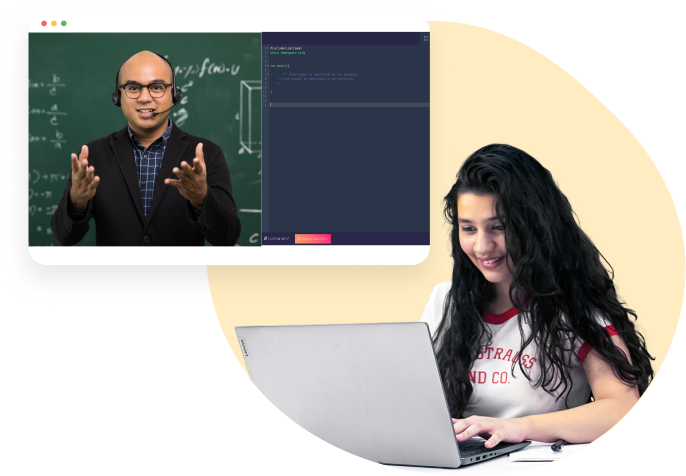Deep Learning
Home
Data Science
Deep Learning
Zero to Master Program
Deep Learning
Deep learning is a subset of machine learning focused on neural networks with multiple layers, enabling computers to learn from data and make decisions. This course covers fundamental concepts such as artificial neural networks, backpropagation, and gradient descent. Students will explore various architectures like convolutional and recurrent neural networks, which are pivotal in image recognition, natural language processing, and other complex tasks. Practical applications include hands-on coding exercises using frameworks like TensorFlow or PyTorch to implement deep learning models. By the end of the course, learners will have the skills to design and train deep neural networks, understand their theoretical underpinnings, and apply them to real-world problems effectively.
4.8
12K+ Learners enrolled
This is where you embark on an amazing journey!
Most flexible program in the industry

Freedom to learn
Watch classes any time at your convenience

Cheat days
Catch up on the course when life is calling you elsewhere

Features that keep you going

A structured curriculum that makes learning easy

Practice code problems of varying difficulty

Engagement coach to keep you motivated

Compile & run in an integrated coding environment

Get doubts resolved in 30 mins
1:1 sessions over voice call & chat with our
skilled teaching assistants

Industry leading mentors to help you grow

1:1 Mock interviews with resume and career guidance

Structured feedback to make you better

Get a chance to be referred to your mentors’ company

Experience a seamless job switch
with hiring assistance
Skill-based hiring across all levels of experience

The results

7000+
Transitions to product companies

250+
Trusted placement partners
Frequently asked but seldom read questions
Yes, this course is entirely offline, and we offer some courses online as well.
A solid understanding of basic machine learning concepts, proficiency in Python programming, and familiarity with linear algebra, calculus, and probability theory are recommended prerequisites.
While a standard computer is sufficient for learning concepts and running basic models, access to a computer with a GPU or a cloud service like Google Colab, AWS, or Azure will be beneficial for training larger models.
This course will equip you with the skills needed to build and apply deep learning models, which are in high demand in various industries such as technology, healthcare, finance, and more. It can open up career opportunities in roles such as Data Scientist, Machine Learning Engineer, AI Researcher, and more.
After completing this course, you may consider advancing your knowledge by taking more specialized courses in areas like reinforcement learning, natural language processing, or computer vision. You can also work on personal or open-source projects, contribute to research, or seek internships and job opportunities in the field of AI and machine learning.

Meet the faculty legends that will make you legendary
Praveen has a full stack development experience and professional
instructor and trainer for Flutter,
Data Science, Machine Learning and Python Programming. Over the
course of his career he has developed a skill set in analyzing data
and he hopes to use his experience in teaching and data science to
help other people learn the power of programming,
the ability to analyze data, and the skills needed to present the
data in clear and beautiful visualizations.
He is an expert in JavaScript & React (Front-end) and has worked on
open-source projects like Firebug and Zulip.
He has also served as a GCI (Google Code-In) Mentor with Zulip. In
his previous role as a Software Engineer he has worked for
Goibibo-MMT.
Course curriculum for the curious
-
-Basics of supervised and unsupervised learning
-
-Overview of deep learning and its applications
-
-Perceptrons and multi-layer perceptrons (MLPs)
-
-Activation functions
-
-Feedforward and backpropagation
-
-Introduction to TensorFlow or PyTorch
-
-Building your first neural network
-
-Introduction to CNNs
-
-Architecture of CNNs
-
-Training CNNs for image recognition tasks
-
-Basics of RNNs
-
-Long Short-Term Memory (LSTM) networks
-
-Applications of RNNs in natural language processing and sequence modeling
-
-Introduction to GANs
-
-How GANs work
-
-Generating images with GANs
-
-Introduction to reinforcement learning
-
-Markov Decision Processes (MDPs)
-
-Q-learning and policy gradients
-
-Deep Q-Networks (DQN)
-
-Policy gradient methods
-
-Applications in game playing and robotics
-
-Transfer learning
-
-Autoencoders
-
-Attention mechanisms

































